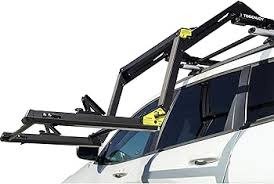The Ultimate Guide to Choosing the Perfect Task Chair
The modern workplace is an ever-evolving environment that requires adaptive solutions to ensure productivity, comfort, and health. A pivotal factor in this setting is the seating arrangement, often overlooked but critical for daily operations. Many professionals spend a substantial amount of their day seated, which can lead to discomfort and musculoskeletal problems if the chair is not ergonomically designed. In this guide, we delve into the intricacies of selecting the perfect task chair, offering a comprehensive overview to aid in making an informed decision.
Understanding the Importance of Ergonomics
The cornerstone of any task chair is its ergonomic supports. Ergonomics pertains to the design and arrangement of products and systems that are user-friendly and conducive to good health. It is essentially about creating a workspace that fits you and not the other way around. An ergonomically designed task chair supports your body comfortably, fostering proper posture and reducing the strain on your spine and joints throughout your workday.
Key Features
When embarking on the quest for a suitable task chair, it’s essential to know the key features that contribute to an ergonomic design. These include adjustable seat height and depth, lumbar support, sufficient seat width and depth, adjustable armrests, and tilt mechanisms. Each feature plays a role in providing tailored support to your body’s unique shape and size.
Adjustability is Crucial
One of the primary considerations in choosing the right task chair is its adjustability. The ability to adjust various components of the chair allows you to personalise the fit to your body. A chair that can be tweaked to suit your height, leg length, and preferred sitting position is invaluable for maintaining comfort and preventing repetitive strain injuries.
Seat Height and Depth
The optimal seat height is one that allows you to place your feet flat on the ground, with your thighs parallel to the floor. This position prevents undue pressure on the underside of your thighs, promoting better blood flow. The seat depth should be adjustable to ensure there is a small gap between the front edge of the chair and the back of your knees, allowing for better leg circulation.
Lumbar Support Is Key
Lumbar support is another essential feature of a quality task chair. It helps maintain the natural curve of your lower back, which is especially important when you’re sitting for long periods. A task chair with adjustable lumbar support can prevent the common problem of slouching and reduce the risk of lower back pain.
Tilt Mechanism and Movement
The ability of a chair to tilt can significantly influence your level of comfort. A good task chair will offer a tilt mechanism that allows the chair to move with you, providing constant support whether you’re leaning back or sitting upright. Additionally, the chair should easily swivel for effortless movement around your workspace, minimising the need to twist your back.
Material Matters
While considering ergonomics, one must not forget the material of the task chair. Breathable fabrics such as mesh provide ventilation, keeping you cool throughout the day. On the other hand, cushioned foam seats offer plush comfort. The choice between these materials often comes down to personal preference and the climate of the work environment.
Armrests for Comfort and Function
Adjustable armrests are crucial for preventing shoulder strain and supporting your elbows and arms. Look for a chair that allows you to adjust the height and width of the armrests so that you can find the perfect position to relieve pressure on your shoulders and neck.
Design and Aesthetics
Beyond functionality, the design and aesthetics of a task chair can also play a role in your selection process. A chair that complements your personal style and the overall design of your workspace can enhance your environment, making it more enjoyable and potentially even boosting your creativity and productivity.
Durability and Quality
Investing in a high-quality task chair is investing in your health and well-being. Ensure the chair is well constructed, with durable materials that can withstand the rigours of daily use. Good craftsmanship and a sturdy frame will offer better support and longevity.
Warranty and Customer Support
Before making a purchase, consider the warranty offered with the task chair. A comprehensive warranty can give you peace of mind, covering potential defects or issues with parts. Additionally, responsive customer support can assist you with any queries or concerns upon receiving your chair.
Take a Test Drive
Just like buying a car, you should ‘test drive’ your task chair before committing to it. If possible, visit a showroom to try out chairs or look for retailers that offer a trial period. This allows you to feel the chair’s comfort and support firsthand and make sure it meets all your ergonomic needs.
Final Thoughts
Choosing the perfect task chair is a critical decision that impacts your daily comfort and long-term health. By considering the ergonomic features, adjustability, materials, and design, you can select a chair that not only feels good but also promotes a healthier work posture. Don’t settle for a chair that’s merely serviceable; aim for one that allows you to work at your best while caring for your body.
With this guide, you are now equipped with the knowledge necessary to select a task chair that aligns with your work habits, comforts your body, and enhances your workspace. Remember, investing in the right chair is an investment in your productivity and well-being.






